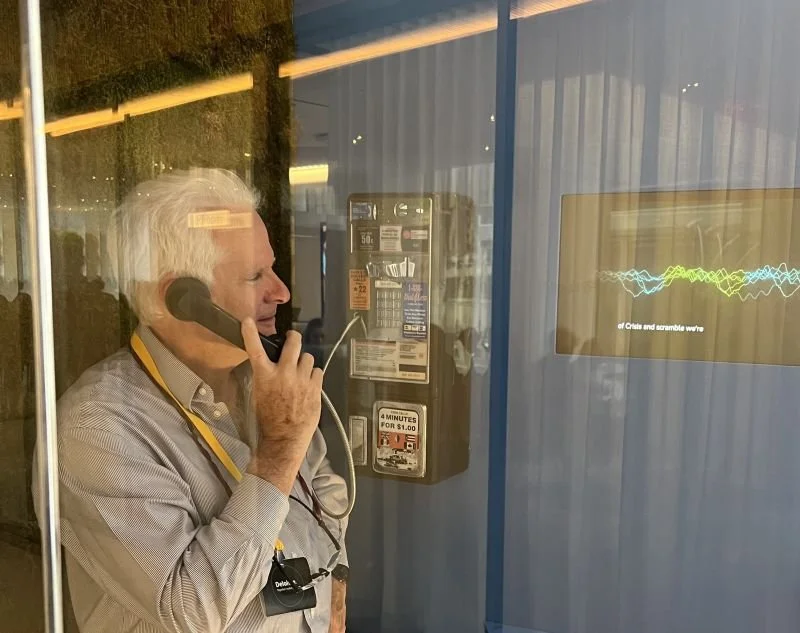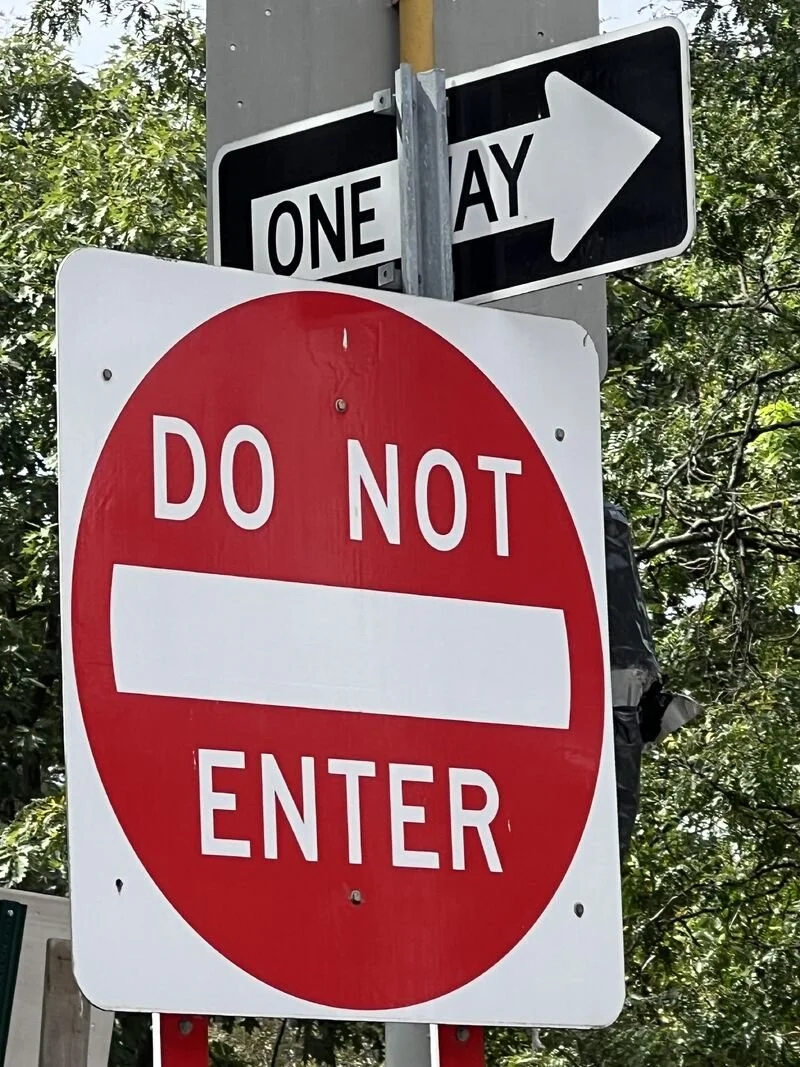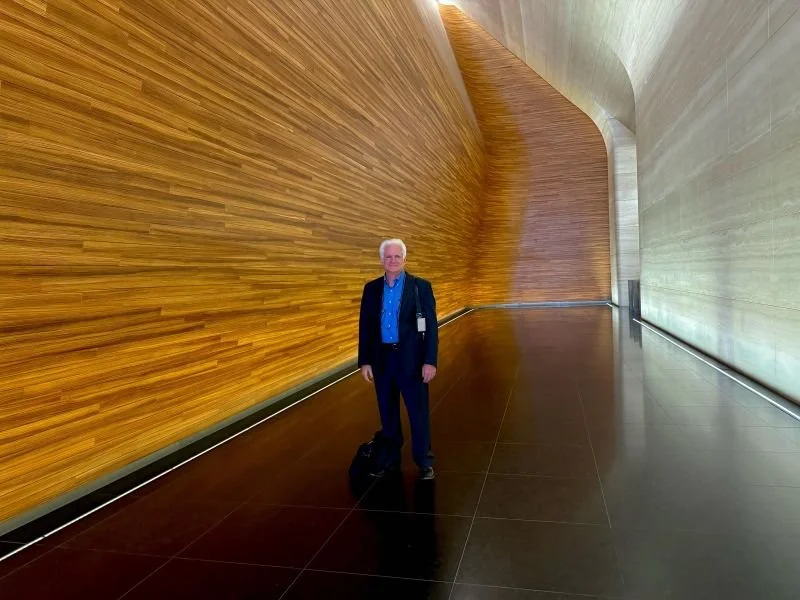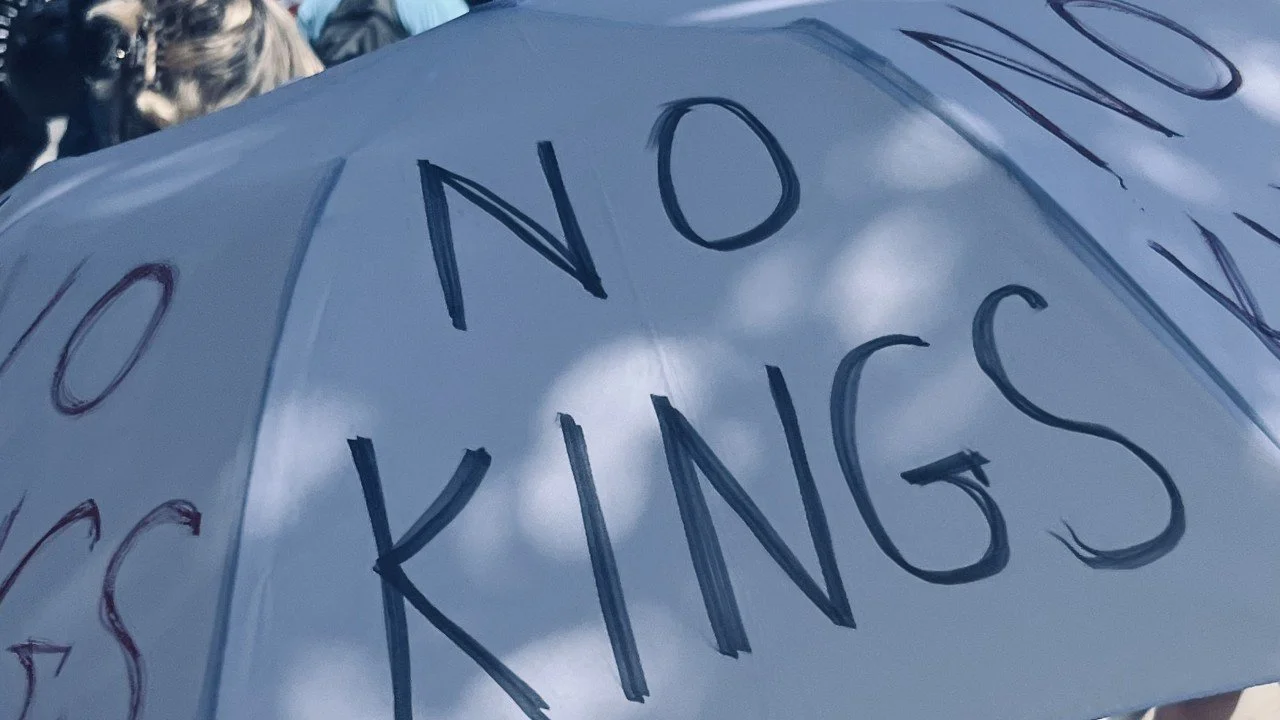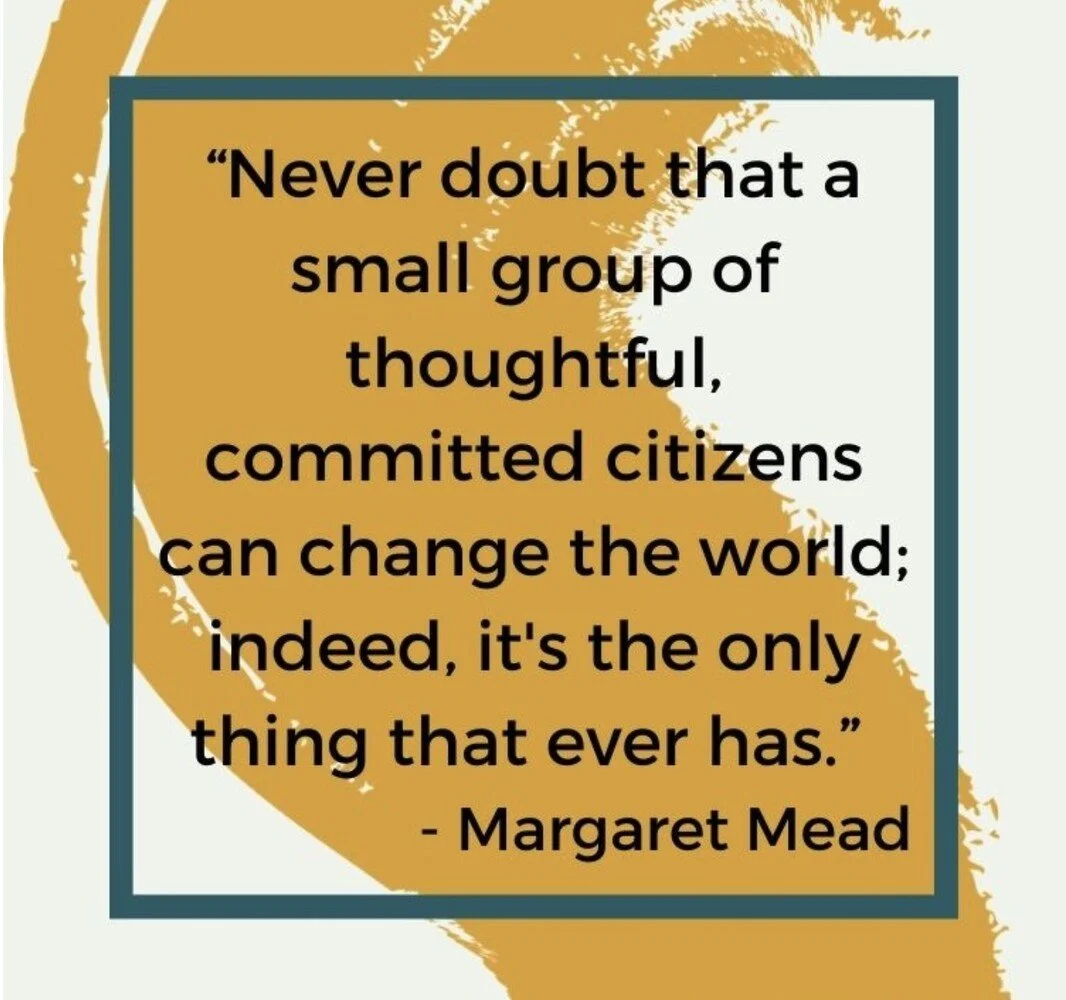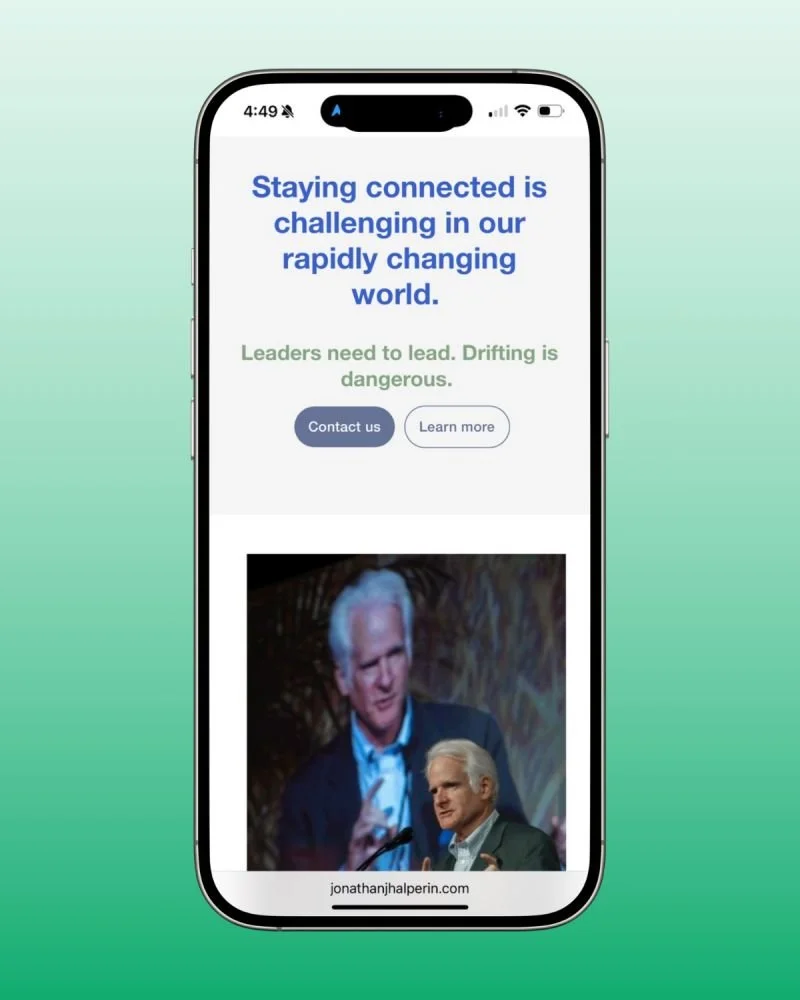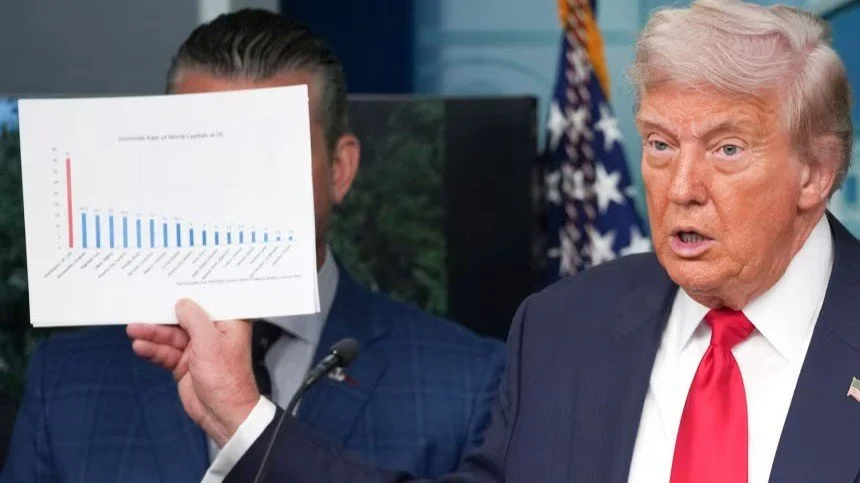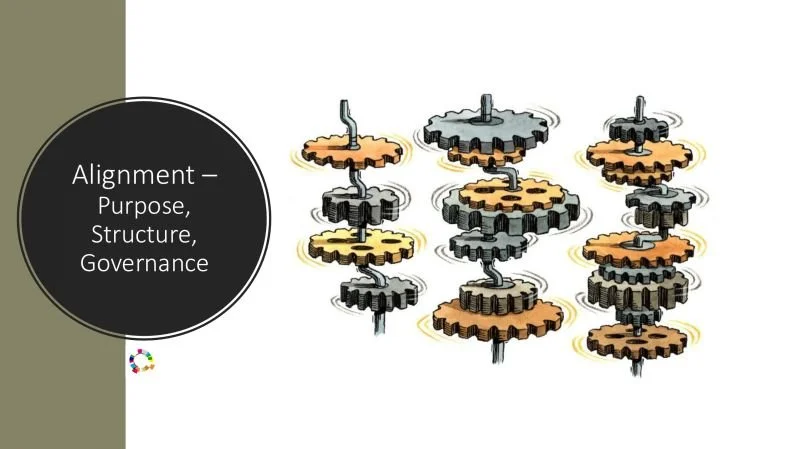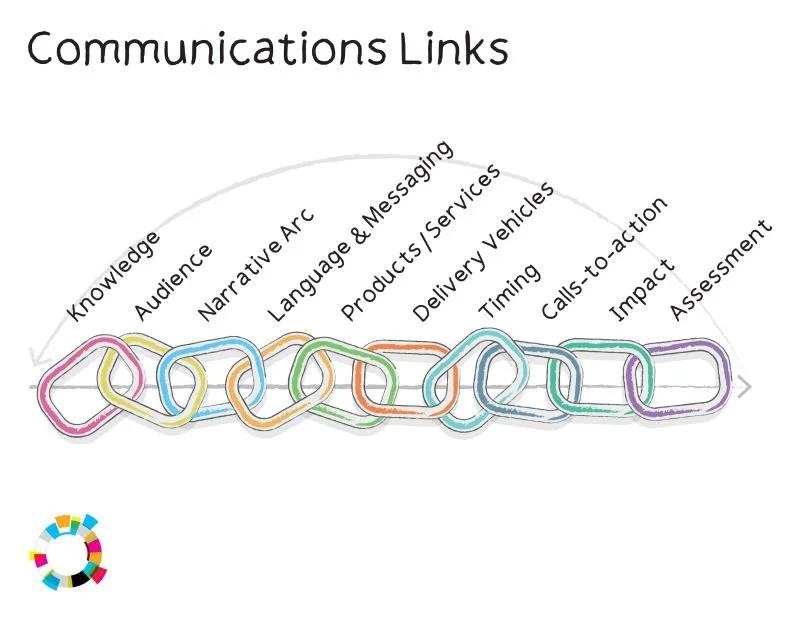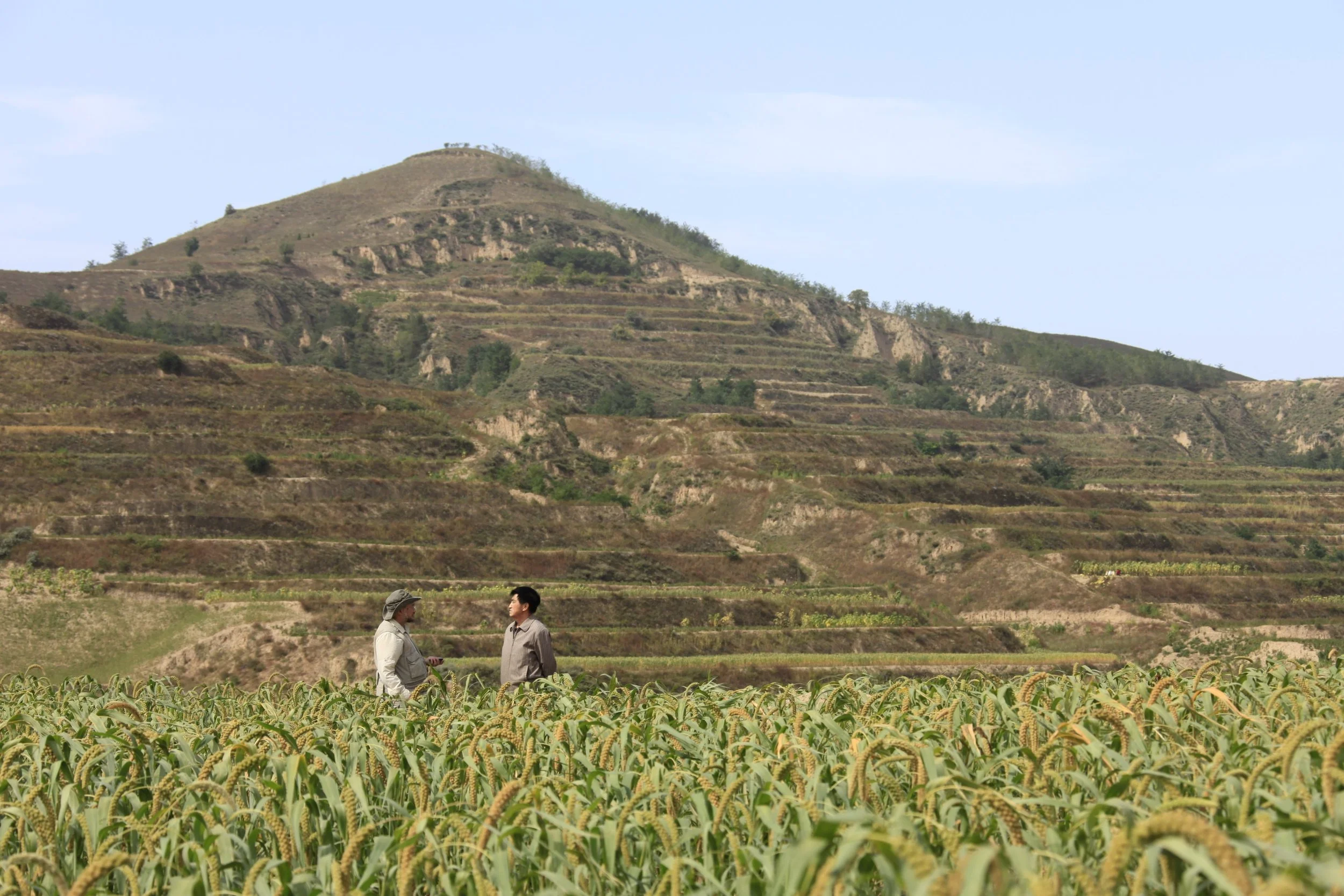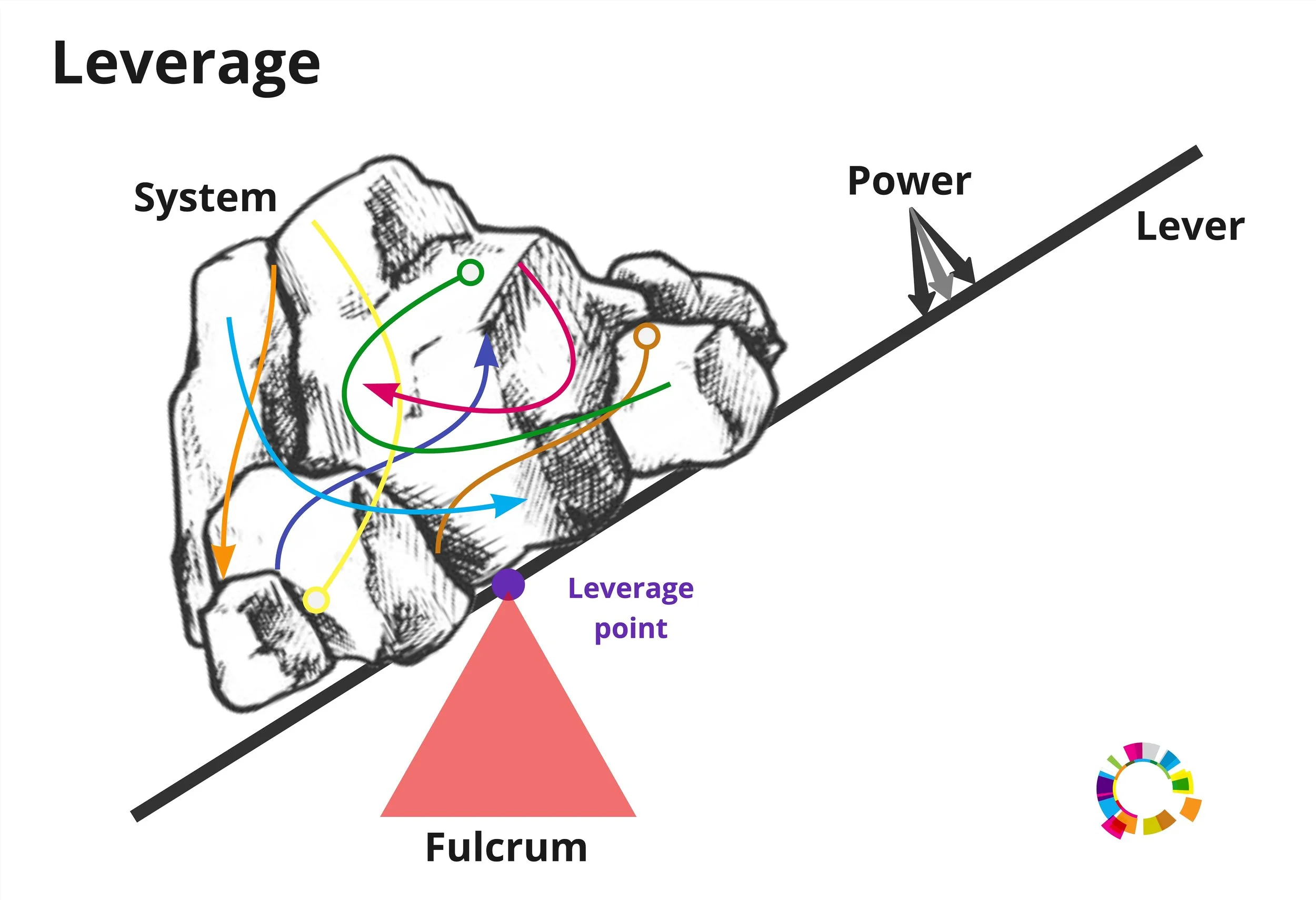
Insights — Blogs and Vlogs
Come gather ‘round people…
Come writers and critics…
Come senators, congressman…
Come mothers and fathers…
For the times they are a-changin’
Because Dylan was right, the topics our blogs and vlogs cover a lot of territory. They are diverse by design.
Water & Externalities
AI is thirsty. By 2027, according to the World Economic Forum, AI could account for 1.1 to 1.7 trillion gallons of water withdrawal—a staggering figure that’s more than four to six times Denmark’s annual water withdrawal.
AI is thirsty. By 2027, according to the World Economic Forum, AI could account for 1.1 to 1.7 trillion gallons of water withdrawal—a staggering figure that’s more than four to six times Denmark’s annual water withdrawal.
Communities near AI data centers are already feeling the strain. Families. Farmers. Local ecosystems. When AI data centers send the costs of water usage to other users, they are sending ‘externalities’ downstream, shifting costs to others who enjoy none of the benefits. Because many of the data centers force others to absorb one of the costs of a system designed without them in mind.
The idea here isn’t to slow innovation, but rather a call to lead it—responsibly, strategically, and with foresight. Because once trust dries up (much like the water), it’s hard to get back.
The moment demands corporate responsibility and accountability. As we build the future, we need to ensure we’re not draining the present.
Leadership & Playfulness
I’ve often rolled my eyes when people talk about listening to their inner child. But during the first evening session at Goals House during #ClimateWeek, I didn't.
I’ve often rolled my eyes when people talk about listening to their inner child. But during the first evening session at Goals House during hashtag#ClimateWeek, I didn't.
Such wonderful insights from people actively and successfully engaging with children—such as Steve Burns, creator and host of “Blue's Clues”; Ellen Doherty, CCO of Fred Rogers Productions; Suzie Hicks, author and creator of “The Climate Chick”; and moderator Sage Lenier, founder of Futureline.
Each of them stressed how important empathy and a sense of wonder are if you’re going to be a leader—especially now, as we work our way through the overlapping political and climate crises.
The conversation brought back to mind one of the most fun (and perhaps strangest) connections I’ve ever helped make—creating the opportunity for “Ulitsa Sezam,” the Russian version of “Sesame Street.” We worked with the Children's Television Workshop to connect them with some of the world’s most talented claymation artists.
As an exercise in bridging differences, finding common ground, and listening carefully, it was a challenge. And it was joyful. And strategic.
Lots of meetings on serious topics have taken place in the gilded halls of the Kremlin. But never before had Big Bird pencils been given in return for red pencils emblazoned with the word ‘Kremlin.’ A fair trade of pencils for pencils.
A big part of being a leader is being able to inspire, to generate enthusiasm, and to show what can be accomplished. And that needs more than a spreadsheet. Sometimes, the best way to lead through complexity is to remember how to play.
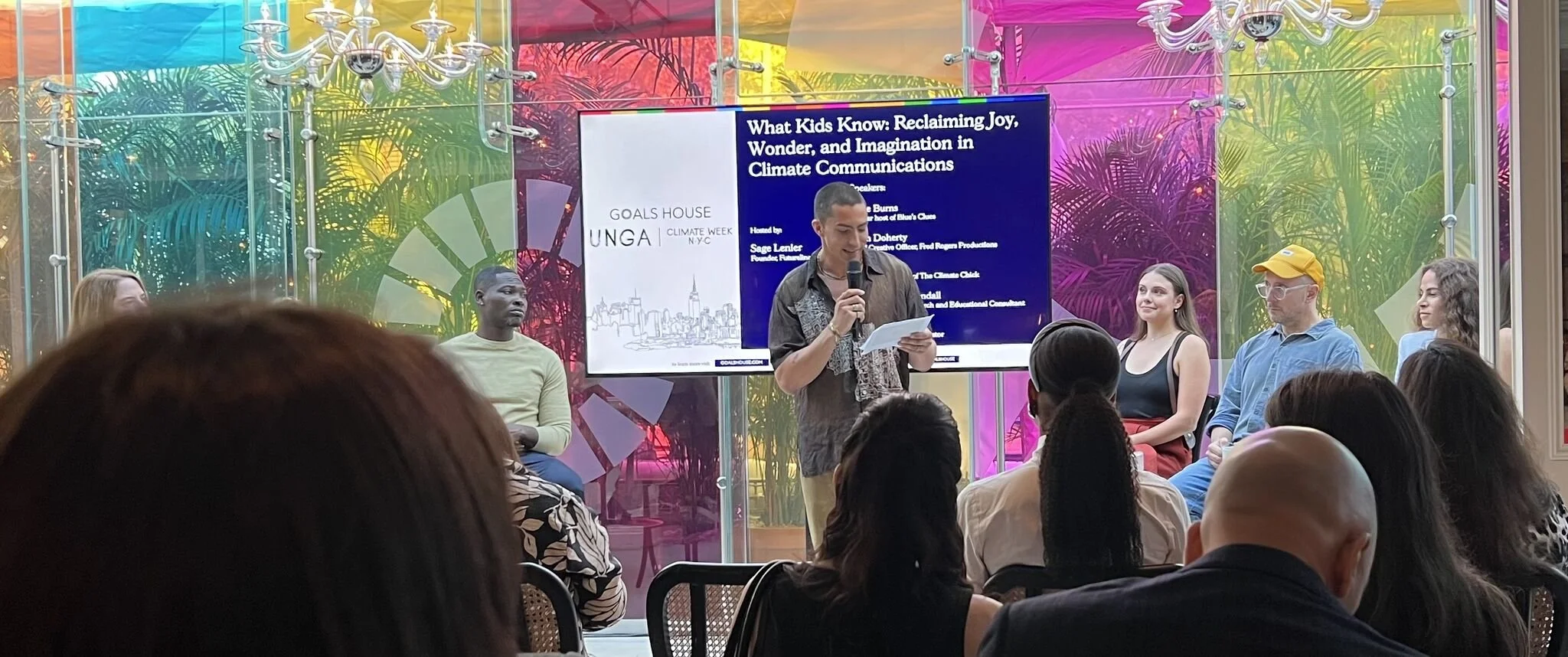
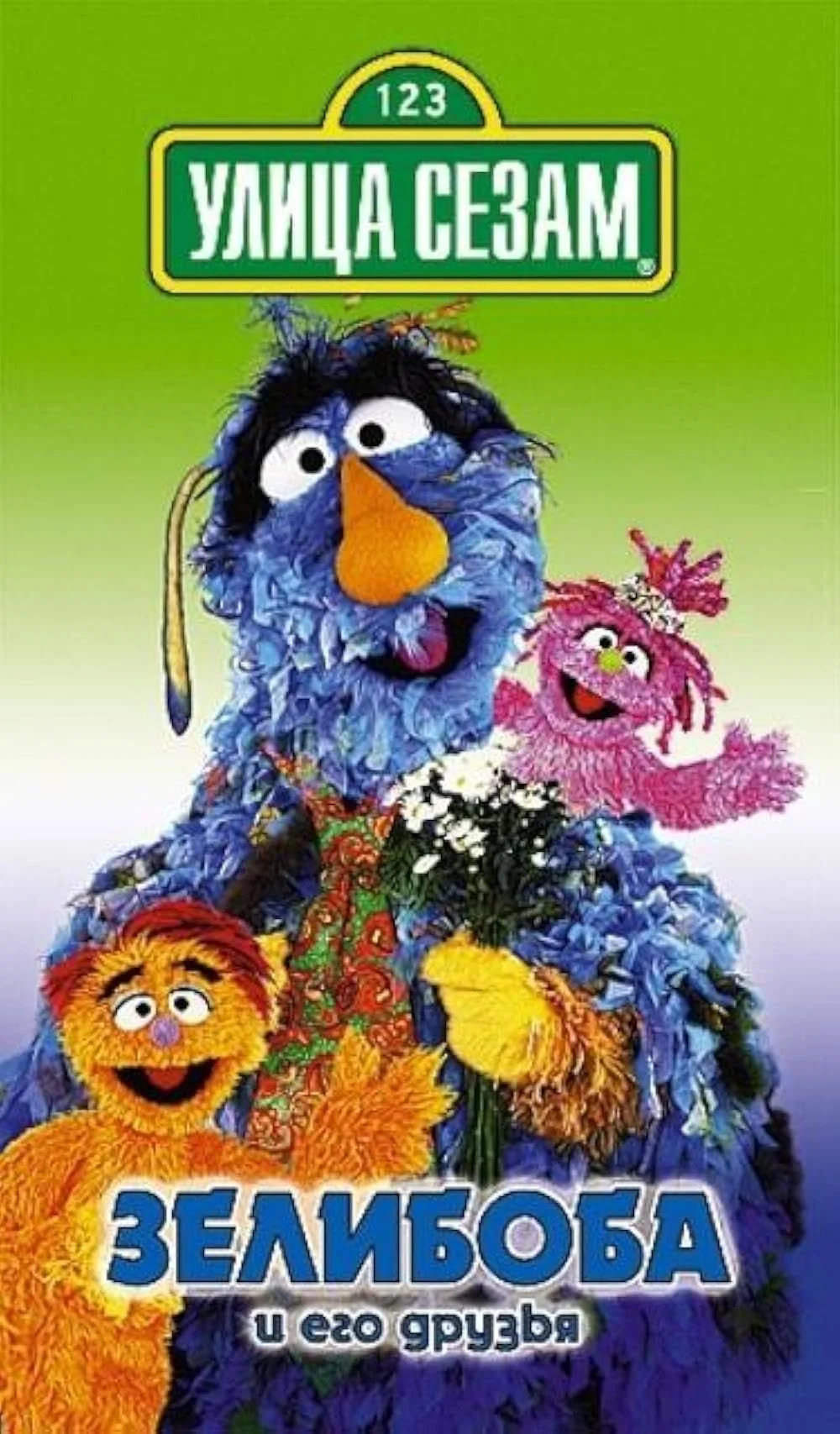
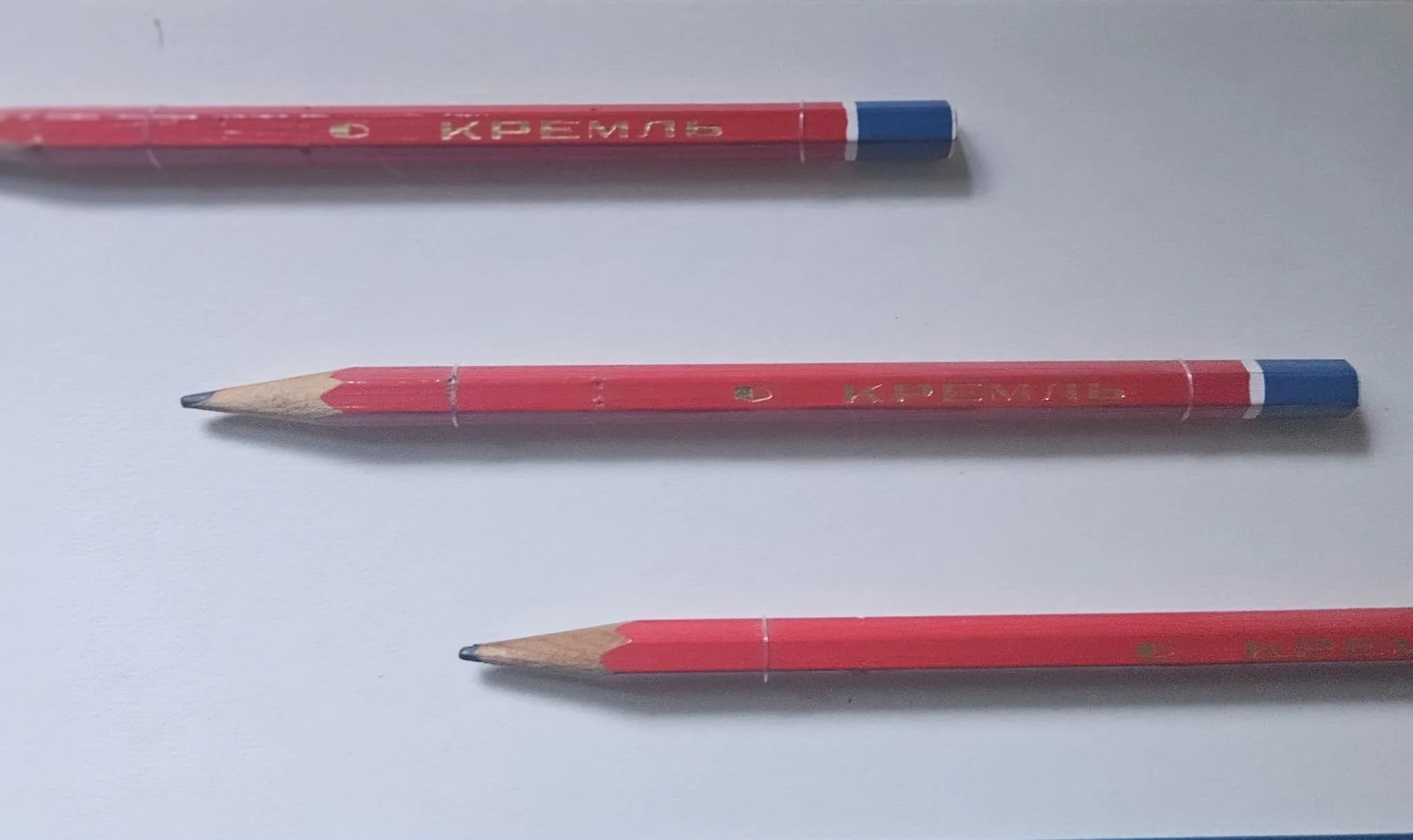
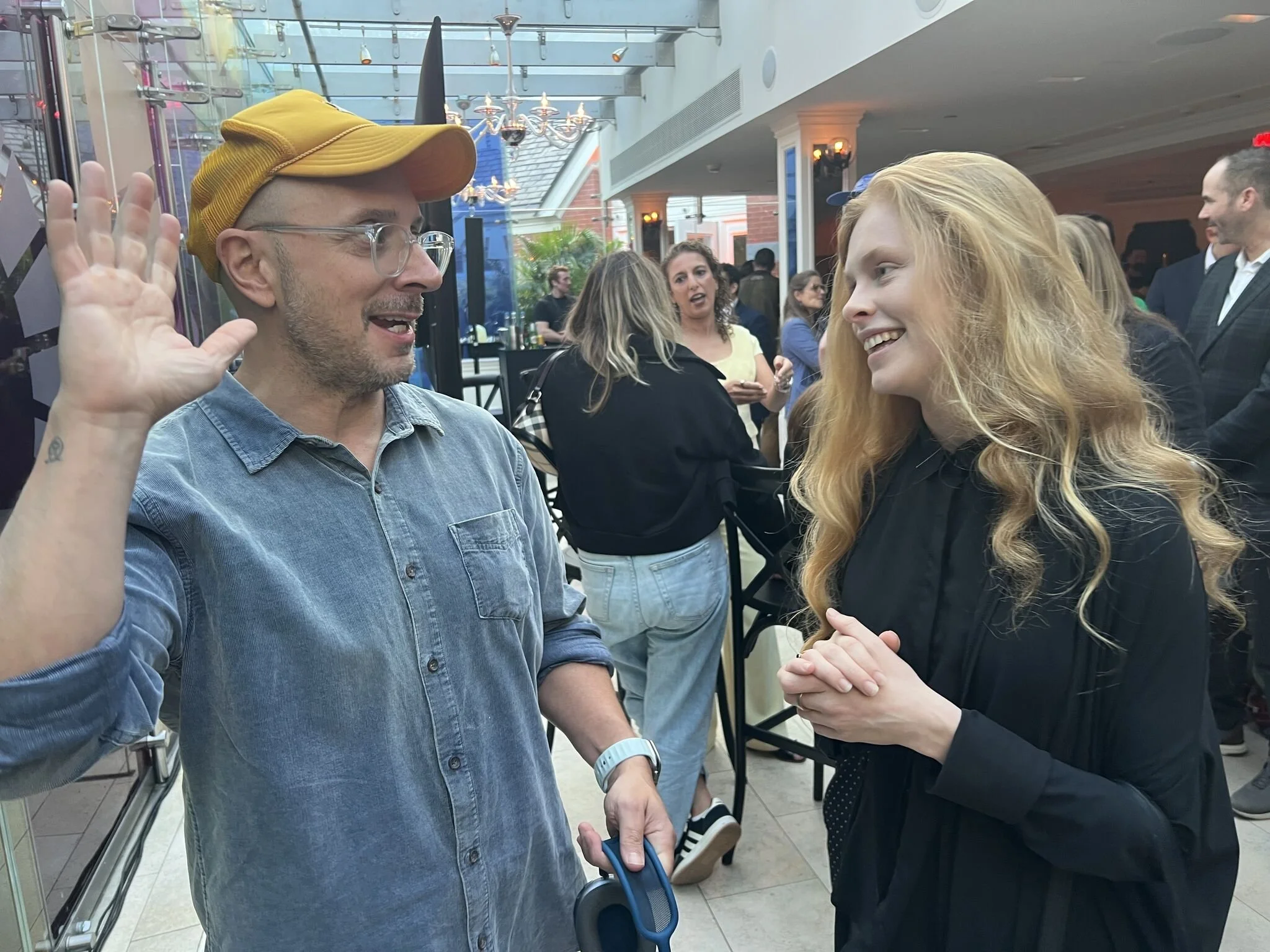
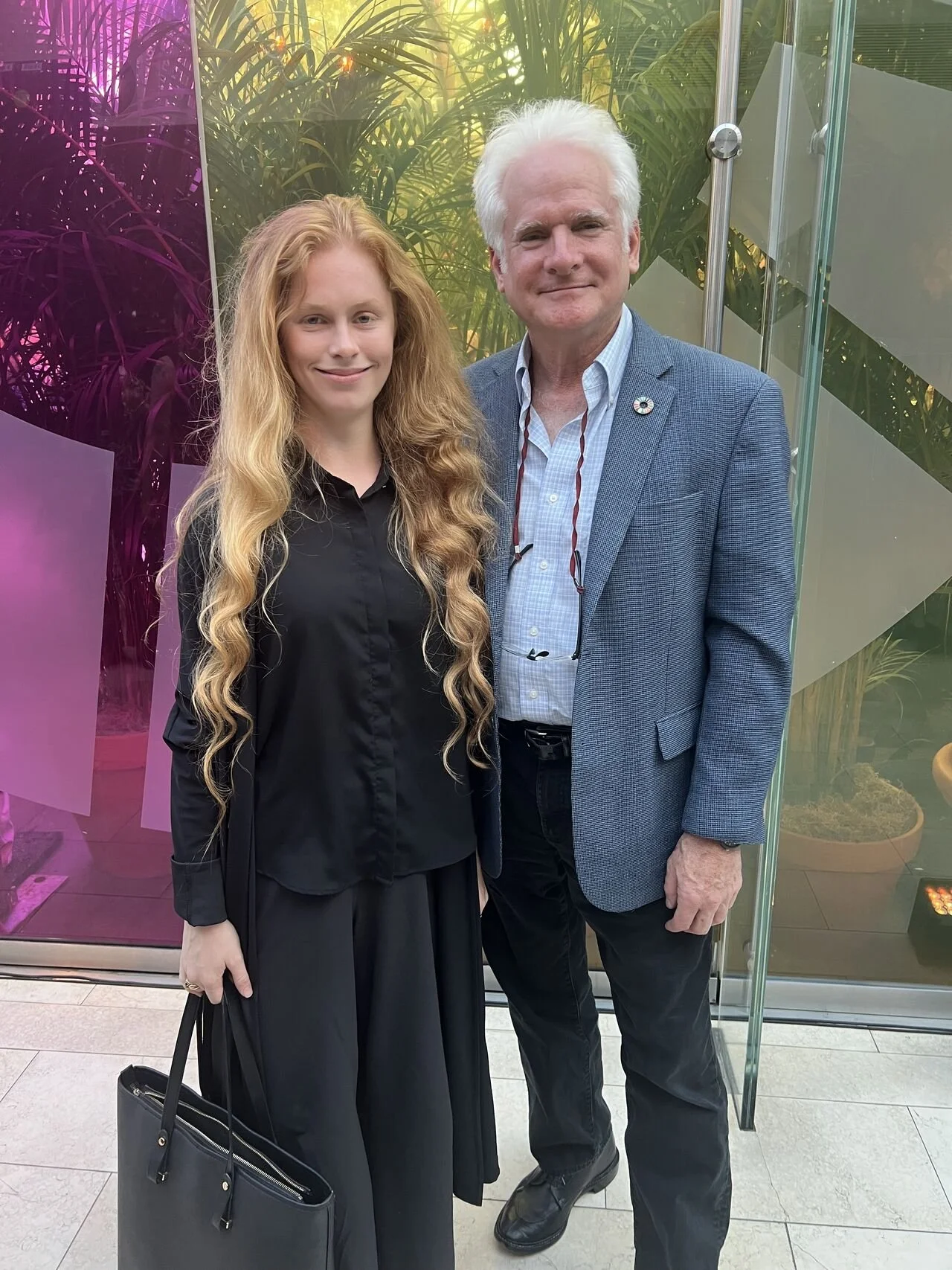
Arguing with a Rock
If you measure business success only on a quarterly basis, you’re working with a calendar that is itself becoming outdated. Sustainability demands a different kind of timekeeping.
If you measure business success only on a quarterly basis, you’re working with a calendar that is itself becoming outdated. Sustainability demands a different kind of timekeeping.
Deloitte, EY, and others are experimenting with scenarios that look 50 or 70 years ahead, asking what the future might say back to us now—if we could listen. That’s a useful exercise for leaders running organizations that don’t have expiration dates.
Yet, traditional Wall Street investment metrics still orient around 90-day increments, choosing short-term earnings over long-term ecosystem sustainability. That may work for a while for The Street. But it doesn’t work for the planet. Traditional investor expectations and mindsets cut against making progress on stabilizing the climate and planet.
Nature doesn’t function on a quarterly basis. Trees don’t grow on a schedule set by analysts. Forests regenerate across decades, not fiscal years. And climate systems aren’t interested in our deadlines.
Paul Polman understood this as CEO of Unilever. He pulled the plug on quarterly earnings calls. He refused to be evaluated on a timescale that had nothing to do with sustainability or long-term value creation for stockholders and stakeholders. He made the long-term visible—operational, not theoretical.
To me, the most powerful definition of sustainability is also its simplest: “Take only what you need. Leave the rest.” It’s a principle that acknowledges interdependence across generations—and the importance of restraint.
Meanwhile, the deniers are still debating whether climate change is “real.” They might as well be arguing with a rock. Geological time doesn’t care what we think. It will continue, with or without us. The only thing we can influence is how we act—and how our actions shape the world around us.
We won’t bend nature to meet our quarterly goals. We either align with its reality, or we pay the price.
Extraction is a Dead End
Finance and soil have more in common than we think.
Finance and soil have more in common than we think.
On Sunday, I attended a small, fascinating conversation during hashtag#ClimateWeek on how to redirect financial flows into regenerative agriculture—and the many challenges of doing so.
The panel was organized by Kat Taylor, Chair of the Board of Directors for TomKat Ranch Educational Foundation and Beneficial State Bank; and it featured Zachary Ducheneaux, former USDA Farm Service Agency administrator; Philip Taylor, Ph.D., founder of Mad Agriculture; and Charley Cummings, CEO for Walden Mutual Bank; and it was wonderfully moderated by Jose Corona, Chief Agricultural Business Officer for the Agricultural Platform Collective and the Office of Kat Taylor.
It became clear to me over the course of the morning that traditional finance is extractive. Just like conventional agriculture.
Loans are structured to penalize, not support. Miss a payment? You’re out. Ask for forbearance from a traditional lender, over the slow months when revenues inevitably decline? Nope. Have your interest rate lowered when you show success over time, so you can continue to grow? Not likely. The structure doesn’t set recipients up to thrive.
Industrial agriculture too often does the same. It mines the soil for nutrients instead of farming in a way that replenishes and regenerates. It depletes rather than provides.
How do we pick up the pace in building regenerative systems, both financial and agricultural?
And maybe we don’t have to dispense with capitalism entirely, but we can reimagine it. Early entrants in this space are designing financial tools to mimic regenerative food systems—supportive, relational, and adaptive. We can redirect capital flows so that all the stakeholders in our food and agriculture systems share both the risks and rewards.
Climate Change Narrative Ain't Working
In New York City for #ClimateWeek and especially glad to be here with Emma Orfield Johnston of Orfield Laboratories, Inc. Unique in the world, Orfield Labs measures unconscious emotions across the sensory spectrum, and they’ve been perfecting the methodology for five decades.
In New York City for hashtag#ClimateWeek and especially glad to be here with Emma Orfield Johnston of Orfield Laboratories, Inc. Unique in the world, Orfield Labs measures unconscious emotions across the sensory spectrum, and they’ve been perfecting the methodology for five decades.
I’ll admit, I’ve had mixed feelings about hashtag#ClimateWeek in the past. The climate crisis isn’t a once-a-year theme—and I know important climate conversations are happening every day—but talk is the first step. It can build trust, lead to ‘ah ha’ moments, generate ideas, and so forth.
Under Trump’s second regime, we know policy is heading south. Fighting for policy change now is a Sisyphean task. But it’s also an opportune moment to rethink our message and narrative.
We have to engage the public in wholly different ways to have a chance of maintaining a stable climate. And time is not our friend.
I keep seeing the gap between what we know and how we communicate—about food, agriculture, climate, and other supremely complex systems. We desperately need a new climate narrative. We need to speak to people’s emotions and tell powerful, memorable stories.
We still have a chance to recalibrate. If you want to help design this new narrative, let me know.
Act Now. It Matters.
Harry Rhodes asked a good question about what we can do to stop the slide into a police state
Harry Rhodes asked a good question about what we can do to stop the slide into a police state. If an election, the traditional remedy in democracy, is no longer likely to resolve the challenge, then your essential question remains. While there is no single answer, some thoughts below.
First, we must be sure we diagnose the problem accurately. Just as Tylenol is not an appropriate response to a cancer diagnosis, neither is hoping that the 2026 election will stop the dismantling of democracy in America.
At an individual level, we each must adopt or revive a mindset of empowerment. We must push back against the propaganda that would have us see ourselves as powerless. In our own heads and hearts, we must believe that we have efficacy. Because we do.
With the privilege many of us enjoy comes power. Many of us are educated, articulate, and connected in myriad ways to tens, hundreds, or thousands of people. Whether through an alumni group or our Facebook followers, whether at a work meeting or a cocktail party, we cannot be mute. Words matter. We must speak the truth as we understand it. There is vast space between silence and argument.
Silence begets silence. Sharing creates relationships.
At the level of community, we must remind ourselves of the groups of which we are already members. That goes well beyond geographic communities, property associations, and so forth. But it does also include the police precincts within which we live. Go visit the local police station, empathize with the challenges they face. Make clear that we support local policing, not federal power grabs. Lots of police stations have community relations officers.
Most of us work, have professional affiliations, and are maybe part of a society or an association. Go to a meeting. Express your thoughts and feelings about how what is happening politically is going to affect work, life, and culture. Wear a t-shirt, hold a sign, get a bumper sticker.
Of course, none of those individual actions will matter; that’s true. But collectively, citizens showing other citizens that they have each other’s backs is incredibly important. It is the power of citizens groups that change the world. In Boston, “we the people” had a Tea Party. In Selma, “we the people” marched across the Edmund Pettus Bridge.
And still, that is not enough, I know. Times are different; the media ecosystem is not what it was. Will the second ‘No Kings’ march planned for October 18 fix the problem? Of course not. But facing united state and city leadership, strong legal push back, and citizens preparing to unwelcome federal agents, Trump did back off sending troops into Chicago. At least for now.
While many of us may be largely insulated from the day-to-day horror of ICE snatching people off the street, make no mistake that our world is changing minute by minute. The culture, the arts, the public spaces we take as a given, like the national parks; how we teach, where we travel, the stories we tell our children; our mental health and sense of security are all in flux.
And this is only the beginning. Decisions in years past about whether to get a flu shot are going to look namby-pamby as we witness the disintegration of the entire scientific basis for public health. The violence done to language, the hateful speech that echoes across society, the intentional lying, extortion, and gaslighting surely affects us all.
So, there is not one thing to do, but if every one of us did one thing, it would make a difference. Would it ‘fix’ the problem? No, but it could mitigate some of the damage.
If you’re an accountant, volunteer to help a local nonprofit work its way through the collapse of traditional funding sources.
If you’re a zoologist, host a monthly potluck to share what you know about how other species manage isolation, and what we know about the importance of communications.
If you’re an arborist, make sure you read the most recent scientific literature on communications between trees and share it across your company or with your clients.
You get the point.
What’s your profession or passion or special skill?
Clarity in Communication
Our refreshed website is amazing, perfect, and phenomenal! Ok, well, that’s a bit much. But I’d love to know what you think.
Our refreshed website is amazing, perfect, and phenomenal! Ok, well, that’s a bit much. But I’d love to know what you think.
A bit like the cobbler not noticing that his children’s shoes look worse than those of his customers, a few months back we had to reflect and ask ourselves: “Are we communicating clearly about the communication services we offer?
The newly refreshed site describes not just the suite of services we offer to mission- and purpose-driven organizations, but also the frameworks that make what we offer different from other strategy and communications shops.
Part of that difference comes from the perspective we gained in the USSR and former Soviet Union, helping companies for 17 years find their way forward amidst historically disruptive changes.
Whether here or there, there’s no one-size-fits-all solution. But change is inevitable. And leaders and organizations need to accept that business as usual is a form of denial.
Are you going to lean into the change and derive energy, innovation, and new successes from that? Or are you resisting, being drained by the relentlessness of the changes, and letting opportunities slip away?
For one organizational example, Resources for the Future realized some years back that its tremendous research and insights were not enough. As part of creating its first-ever comms team, we devised ways to help RFF present analysis of extremely complex issues in straightforward ways. We also managed the refresh of its website.
On the issue of climate change, for another example, we executive produced the film “Hope in a Changing Climate” and set up discussion groups around the world to spread the message that agriculture had to be part of the solution to this global threat. And that is becoming ever more clear today.
Whether working with the Equitable Food Initiative (EFI) to demonstrate the power of its transformative and systemic approach to empowering farmworkers or with Greyston Bakery in Yonkers to share its Open Hiring™ practice, the connective thread that runs through our work is helping organizations see change clearly and successfully navigate through uncharted territory while staying on mission.
We have changed the look of our digital entryway, but not our focus on change. If we can be a resource for you today, let’s talk.
https://lnkd.in/eNijuBjK
Is this Rain or ROIT?
Many organizations act as if communications is just about delivering the right message.
Many organizations act as if communications is just about delivering the right message. Say it clearly, say it confidently, repeat it enough, and the job is done.
But communication isn’t a broadcast. It's about building a connection.
Take the concept of “risk.”
To a financial analyst, risk might mean volatility in the markets. To a farmer, it’s weather, drought, and disease. Same word. Completely different meaning. If you want to invest in regenerative agriculture, or organic farming or AgTech, you need to bridge this gap really fast—or your transaction costs are going to go through the roof.
Step one is accepting that the gap is real. You and your partners or stakeholders may really be speaking different languages. And it’s not like you can just hire an interpreter as if you needed help going from Chinese to Spanish.
Successful communications are sticky. When we guide communications folks, we often ask, “What’s the most important part of effective communications? What is the key to making a message stick like Velcro?”
Tell us what you think and we’ll share back what we hear.
Lies, Damn Lies, and Statistics
You know that feeling when you’re leaning back in a chair, it seems to be almost magically balanced on just two legs—and then there’s the flash of panic when you realize it’s not?
You know that feeling when you’re leaning back in a chair, it seems to be almost magically balanced on just two legs—and then there’s the flash of panic when you realize it’s not?
I’ve been feeling that a lot recently—a profound cognitive dissonance, living between two worlds which seem utterly incompatible. The leaders we work with also report being caught in a balancing act between “staying the course” and feeling like there’s nothing usual about business and work today.
Although Washington, DC, has less total crime per capita than places like Detroit, Memphis, and Houston, we need National Guard troops from West Virginia and South Carolina to keep our streets safe? Make no mistake, this is a practice run to demonstrate and normalize President Trump sending guard units from Republican-lead states to intimidate Democratic leaders in other states.
For most folks, watching paint dry is more interesting than reading Bureau of Labor Statistics reports, yet the leader of an agency—trusted and relied upon by leaders across the political spectrum—was fired because July’s monthly employment numbers didn’t follow Trump’s narrative. Killing this messenger bodes ill for those of us in the real world who have grown accustomed to believing that we don’t live in a house made of sand.
World-class research is being stifled at the Environmental Protection Agency, National Institutes of Health, and myriad other agencies; findings from which have girded our lifestyle, culture, and economy—from the food we eat to the medicines we produce, from weather forecasting to maintaining our national parks.
Facts are the enemies of fraudsters. But whether you’re leading a business, running a foundation, or guiding a nonprofit through turbulent times, your mission, your strategy, and your day-to-day decisions are grounded in a fundamental understanding of reality. Like gravity, core facts just are. They’re not political.
Emotions count too—a lot, actually. But without real data, accurate statistics, and honest analysis, we’re awash in meaningless numbers.
And that’s the goal.
When everything is political, when no facts can be trusted, we lose our grip on reality. Can’t happen here? It’s an exaggeration?
Maybe. But maybe not. I was in the Soviet Union when high school history exams were cancelled across the country. Because they didn’t know how to grade them, having smothered historical truths with propaganda and lies.
And today it’s not just about history, but about our common future. Like a king, Trump believes he has the right to override constitutional parameters set for the Census and order a new one. He wants to lay a national curator at the Smithsonian Institution because it’s “OUT OF CONTROL, where everything discussed is how horrible our country is, how bad slavery was.” And he wants the right to rig congressional elections because he won the presidency.
It’s hard but we need to stay balanced on the see-saw between fact and fiction. We need to remember what normal is amidst a massive effort to normalize the outrageous. We need to really support each other—and those who may not be part of our inner circle but are also experiencing profound cognitive dissonance or worse. We need to guard against creeping self-censorship.
We need to speak the truth. A lie is a lie. What is illegal is illegal. Extortion is extortion. We can support the Smithsonian and make clear that if forced to engage in a historic cover-up, they will do so not by removing objects or materials but by covering them up. Literally, with canvas. Or maybe with a tapestry of American flags.
Photo by Andrew Harnik
Bullying on a Global Scale
Whether it’s Putin or Trump’s manipulation, the shell game being played with President Zelenskyy isn’t going to end well for Ukraine.
Whether it’s Putin or Trump’s manipulation, the shell game being played with President Zelenskyy isn’t going to end well for Ukraine. What do we have to show from all the hoopla of a red-carpet meeting in Alaska and a summit of the willing at The White House?
Putin is a KGB agent and professionally trained liar and manipulator. Trump does it instinctively.
So what started out as a breakthrough—a ceasefire in Ukraine or very strong sanctions against Russia—devolved into nothing more than Trump promising to arrange another one-on-one meeting, this time between the invaded and the invader. So… not happening.
Security guarantees have come center stage only because there is absolutely no deal being made about the territorial integrity of Ukraine. Security, shmecurity. Security guarantees, boots on the ground, no-fly zones, and shared intelligence mean nothing with Russia being awarded the entire Donbas region of eastern Ukraine.
Despite a change of clothes—really, we’re still talking about what Zelenskyy is wearing?!—the deal now is the same opaque arrangement that came out of the humiliation summit six months ago. It’s about the value of the 20,000 square miles of Ukraine that contain trillions of dollars of rare earth minerals (lithium, tantalum, cesium; “raw” as Trump called them) and massive quantities of coal and natural gas.
We may have trouble keeping our eye on what’s really happening (the sleight of hand is often hard to pierce), but I’d wager all the caviar in the Black Sea that what is really being negotiated here is how Trump and Putin will share in the spoils of war. It’s about power, money, and access to resources.
But now that the second most important part of what Ukraine seeks (security guarantees) and the easiest part of what the Europeans can deliver (weapons) are almost settled, Trump will be able to really put the squeeze on Zelenskyy.
Can’t you hear that patronizing voice, and see the shrug of shoulders, when Trump tells the president-with-no-cards that, “You can’t get everything you want. You got the security stuff. That’s enough. Don’t stand in the way of peace. Your people are getting slaughtered.”
Bullies, both Trump and Putin.
Alignment
Misalignment doesn’t just confuse your audience. It erodes trust, slows progress, and creates internal friction….
Misalignment doesn’t just confuse your audience. It erodes trust, slows progress, and creates internal friction. And it’s often invisible until it’s costly.
When your purpose, structure, and governance aren’t aligned, there are consequences—a missed opportunity, a botched launch, a disengaged team.
Take a test: Ask five important stakeholders to describe your organization’s mission in one line.
If you get five different answers, you’re not alone.
I’ve seen this scenario across nonprofits, companies, and coalitions alike. It’s not just a comms issue. It’s a systems issue.
When your narrative drifts from your mission—or your structure conflicts with your strategy—you’re probably confusing important parts of your audience.
You lose clarity. Next, credibility falters. Then momentum slips away.
But when purpose, structure, and governance are aligned?
→ Priorities become clear.
→ Risk diminishes.
→ Trust builds.
→ Progress accelerates.
So if you’re unsure where to begin, start by asking that one-line mission question. The answers might surprise you. And they’ll almost certainly guide your next move.
Need help turning five different voices into one clear direction? That’s what I do.
Murphy’s Law
“Murphy’s Law.” We’ve all heard it. We’ve all said it.
“Murphy’s Law.” We’ve all heard it. We’ve all said it.
"Anything that can go wrong will go wrong."
But most people don’t know where it actually comes from—or what it was really meant to convey.
Spoiler: It wasn’t about pessimism. It was about evaluating risk.
In my latest video, I dive into the origin of Murphy’s Law, the real-life engineer behind it, and why it’s so relevant today as we face new and unprecedented risks—at work, at home, and in the life of our democracy.
Take a moment to learn what Murphy’s Law actually means…
Your Call is…
Propaganda or promotion? Where’s the line?
Propaganda or promotion? Where’s the line?
When I lived and worked in Moscow, I witnessed how propaganda seeps into every layer of life. And once you’ve seen it—really seen it—you can’t unsee it.
Since then, I’ve developed a kind of radar. Whether it’s a political ad or a corporate slogan, I find myself asking: What’s really being said here?
Take the classic customer service line: “Your call is very important to us…”
Is it really? Then why have you outsourced and reduced call center staffing?
That phrase isn’t customer care. It’s corporate propaganda. It’s a script designed to soothe while signaling indifference.
The subtext: “Your time doesn’t matter. Ours does.”
Wouldn’t it be refreshing to hear the truth? “Thanks for calling. To reduce costs, keep our prices affordable, and bring you the products we hope you love, we’ve cut back on call center staffing. Thanks for holding. Your call should be answered shortly.”
Much of modern marketing is about shaping consumer behavior to conform to the needs of companies selling stuff. If we changed that to read, "shaping political behavior to meet the needs of those in power,” we’d call that propaganda.
So here’s the line of questioning I keep circling back to: What’s the responsible way to promote a mission, product, or service? How do we win the fiercest competition, for attention, without manipulating people with propaganda?
Curious to hear from fellow communicators, strategists, and leaders: Where do you draw the line?
Crisis Communications
If you don’t have a crisis communications plan, you’re going to have a communications crisis.
If you don’t have a crisis communications plan, you’re going to have a communications crisis.
Not might. Not maybe. You will.
Because when the unexpected hits—and it will—you’ll be forced to improvise under pressure. And improvisation isn't a strategy. It’s damage control.
A true crisis comms plan isn’t just about drafting a statement. It’s about helping teams ask hard questions long before chaos strikes:
- What happens if the founder dies?
- Who speaks, when, on what topics, and with what authority?
- What’s the plan if the organization or company becomes the object of a political attack?
- What’s the tiered decision-making process for different levels of crisis? (The people on the scene need to act fast, while leaders need to be informed quickly and weigh in when needed—and stay out of the way when not.)
Too often, leaders don’t prepare for a crisis because they think, “That won’t happen to us.” But ignoring risks doesn’t make them go away. It just makes you vulnerable.
What you don’t know can—and will—bite you in the butt.
When it does, the headlines write themselves. The narrative spirals. Brand value and organizational credibility starts to evaporate.
Because we cannot avoid all crises, we have to mitigate risk by preparing for and knowing which kinds of risk are likely to do real damage. The time to think and plan is now.
If you don’t already know, we can help you understand the seen and unseen risks your organization faces—and build an appropriately sized crisis comms plan. Just reach out.
Culture at Breakfast
I once worked with a CEO who thought her biggest management challenge was internal comms and language. It wasn’t.
I once worked with a CEO who thought her biggest management challenge was internal comms and language. It wasn’t.
The message was clear. The tone was fine. But it still wasn’t landing. Because the company’s underlying culture was getting in the way.
We’re often brought in for what looks like a comms issue. But what we often find is something deeper—a work culture that needs more than a communications fix.
If people are disengaged, it’s rarely because they don’t understand the message. It’s usually because they don’t feel equipped to act upon it.
That’s not a comms problem; it’s a culture problem. Comms is surely part of the solution, but comms alone is not enough.
The work that’s needed tends to get tagged as “change management.” But we don’t love that term. You only manage change by managing people and systems to shift the culture.
Culture change is about helping people adapt, align, and move forward together.
“Culture eats strategy for breakfast,” as the saying goes. There’s a good chance that what presents as a comms problem is actually rooted in an underlying issue that’s standing in the way of comms.
Blured Vision
If you’re a leader sensing your team doesn’t connect their day-to-day work with your larger vision, you’re not alone.
If you’re a leader sensing your team doesn’t connect their day-to-day work with your larger vision, you’re not alone.
I work with executives who know where they want to go—but their team isn’t aligned. Not because the vision is flawed, but because the team doesn’t feel connected to it. Visionary leaders are often out ahead of the headlights.
If team members cannot see the vision clearly, then they cannot embrace it and see how their work contributes.
An organization’s vision needs to speak to our values, to what drives us into a future in which we can see ourselves—and maybe even our kids.
It should feel less like a poster on the wall and more like a destination. And it ain’t gonna work unless the roadmap from here to there is built collectively.
Did you truly engage team members in developing the vision—or just have a few meetings where you explained why your vision should be important to them?
Do you know which parts of the vision excite them? Which parts feel true and real?
If you haven’t already done it, now is always the best time to shift from presentations to conversations. You’d be surprised how many thoughts your team has about the work, the vision, the organizational purpose, and how they all connect—or don’t.
When There's No Box
When the woman who served for years as my country director in the former Soviet Union came back to the US, she had a job interview and was asked: “Can you give an example of thinking outside the box?”
When the woman who served for years as my country director in the former Soviet Union came back to the US, she had a job interview and was asked: “Can you give an example of thinking outside the box?”
Her response: “Box? There is no box in the Soviet Union.”
That little story has stayed with me over the years as a good example of the need to challenge our assumptions and disrupt how we think.
Now more than ever in this country, we need radically different perspectives to reveal new possibilities. Business as usual isn’t going to cut it, especially for people and organizations trying to change the world.
If you want new eyes on the problem and a new perspective to address the radically different operating environment we all find ourselves in now, give a shout. Maybe I can help.
Communications Links
Most organizations have a message, and the message matters—a lot. But there’s more to effective comms than getting the message right….
Most organizations have a message, and the message matters—a lot. But there’s more to effective comms than getting the message right. Organizations can work hard and well on a message and then stumble to send it out in a timely manner to the right audience via the best channel.
So it’s often not a messaging problem, but a coordination problem.
Over time, executive leadership gets out ahead of the operations team, managers don’t communicate well horizontally, and project teams grow in parallel rather than in partnership.
👉 Comms is ready to roll, but leaders haven’t signed off.
👉 Communications is ready with news about a product, service, or project, but legal hasn’t given the green light.
👉 A project team is about to send an announcement that’s technically accurate, but way off in its messaging.
Sound familiar?
When the links become disconnected—between knowledge, narrative, timing, and delivery—organizations falter, deadlines are missed, and frustration mounts.
That’s why my team and I have built a framework to help executives, managers, and team leads see the recipe for effective communications, from idea to impact.
Because it’s usually not just about getting the message right. It’s about getting it through.
Need help identifying the weak or broken link? Give me a shout.
The Dignity of Work
A single word can sometimes change everything.
I worked with Greyston Bakery— the benefit corporation that created the practice of Open Hiring™ policies—on a subtle yet strategic shift in language that had a powerful impact.
A single word can sometimes change everything.
I worked with Greyston Bakery—the benefit corporation that created the practice of Open Hiring™ policies—on a subtle yet strategic shift in language that had a powerful impact.
Greyston has done amazing work for decades to help create job opportunities for people who are often considered unemployable. Many of them are returning citizens (whom we cavalierly call “ex-cons,” as if they did not have a life prior to being imprisoned).
For many years, Greyston described this mission as helping people WITH obstacles to employment.
But that one word—‘with’—frames the problem as if it belongs solely to those seeking jobs rather than those seeking to hire.
It suggests the obstacle is something that returning citizens and others carry—something inherent to who they are
As part of an overall communications strategy, we worked with the incredible leaders of this unique bakery (like Mike Brady) to change ‘with’ to FACING—making it “helping people facing obstacles to employment.”
People have their history, no question. But we, not they, have traditionally defined those obstacles to employment. These are obstacles they face, and these obstacles are often structural—background checks, systemic bias, and policies that prioritize exclusion over opportunity.
This wording change does more than clarify. It reassigns responsibility. It tells a deeper truth.
Language is an incredibly powerful toolkit we can draw from to help us reshape narratives, challenge assumptions, and build more equitable systems. But we need to make sure we use the right tools.
Within a communications strategy that has a clear intent and audience, even the smallest edit can change people’s understanding of a problem—as well as the mindset needed to overcome it.
Power. Systems. Change.
Changing a system is easy. Doing it intentionally, not so much….
Changing a system is easy. Doing it intentionally, not so much.
Ecological examples abound:
The destruction and restoration of the wetlands ecosystem in Santa Ana Pueblo, New Mexico—the location of this week’s annual conference of the Sustainable Agriculture & Food Systems Funders (SAFSF).
The revitalization of the Loess Plateau in China—where, with John D. Liu’s incredible video footage, we produced Hope in a Changing Climate.
The destruction of the Aral Sea in Karakalpakstan (in what was Soviet Central Asia).
Changing systems changes power—and those who have it generally don’t give it up readily. Because everyone who eats is part of the food and agricultural eco/social/economic/political system, change in this system cascades way beyond what we eat and how we grow it—and is totally intertwined with health, energy, climate, and water.
Most systems actually deliver what their creators intended, which may or may not be what the users of the system want or need. There are unintended consequences, but just as history is written by those who win rather than lose wars, so too creators hold the upper hand—whether we describe it as market power, the installed base, or choke points.
But change and stability are interconnected in complex ways. Looking backward, the Greek word and mathematical symbol for change is the Delta (Δ). In geometry and engineering, that same shape, a triangle, is the sturdiest of structures. That’s ironic. That which can withstand change also represents change itself? Perhaps that’s the paradox of leadership—being both the catalyst for change and the guarantor of stability. Change without direction and purpose devolves quickly into chaos.
Change, of course, does not come like a meteor from outer space. Change does, however, often come from the edges of existing systems, from people and institutions just barely within the current system and also from people on the other side of the edge—people excluded or marginalized by a dominant set of interwoven systems. Innovation also drives change and can come both from within and outside dominant systems.
If changing a system is the intent, we should take note of the four fundamental elements of most systems, and understand the differences among the four, as well as the linkages between them.
Systems have leverage points, and correctly identifying that critical point, or points, is essential.
Positioning a fulcrum at that leverage point reduces the level of effort needed to move the system.
Once known, the interplay of these two system elements helps identify the kind of lever needed.
The amount of power or energy required to leverage change becomes unmistakably clear.
While simplified, the graphic below captures the relationship of these key elements.
There is, of course, no one leverage point in the sprawling system of food and agriculture in the United States. It is, in fact, not one but a multitude of intertwined systems—and there is no swapping in a new system to replace the current system. Changing it, yes. Transforming it, yes. Shifting the embedded values that define the shape and operations of the system, absolutely.
Stability, an inherent feature of the triangle, is not necessarily in opposition to change—and sustainability brings together aspects of both change and stability. The simplest definition of sustainability is to take only what you need and leave the rest. Applied, that principle would drive massive changes today—while ensuring future generations can enjoy a stable existence.
Whether a wetlands, a plateau, or a sea; a social network; an extended supply chain; policies that shape markets; the complex personal, psychological, and emotional dynamics of family systems; or the systems of politics and government that may seem immutable—all systems can be changed.
The direction of that change, however, is not preordained. Systems that people have designed can indeed be changed by people.

